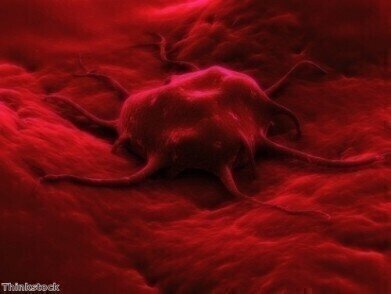-
 Relapse occurs when not all the cancerous cells are removed from the brain.
Relapse occurs when not all the cancerous cells are removed from the brain.
Bioanalytical
Bone polymer could hold key to brain tumour treatment
Nov 15 2013
Chemotherapy drugs could soon be delivered directly into the brain thanks to a polymer that was originally designed for aiding in the mending of broken bones. Patients with brain tumours could benefit from the discovery that may mean the drugs are more effective as they can be specifically targeted at the tumour, according to a new study.
Researchers from the University of Nottingham have published a new study in the journal 'Plos One', which shows that chemotherapy drugs can be administered via the cavity created in brain cancer surgery. The treatment would involve a biomaterial being placed in the cavity, which would then release the drugs over a period of several weeks.
Patients could benefit from a reduction in the side effects of chemotherapy when receiving the drug treatment in this method, according to the study. This is because there would be no toxic effects of the drugs on healthy areas of the body, which can affect patients following treatment.
Doctor Ruman Rahman, from the University's Children's Brain Tumour Research Centre (CBTRC) and leader of the new study, said: "Our system is an innovative method of drug delivery for the treatment of brain tumours and is intended to be administered immediately after surgery by the operating neurosurgeon".
"Ultimately, this method of drug delivery, in combination with existing therapies, may result in more effective treatment of brain tumours, prolonged patient survival and reduced morbidity."
In terms of cancer-related deaths, brain tumours are the biggest cause of deaths in children and adults aged below 40. They are a particularly difficult form of cancer to treat, especially as it can be challenging to remove all of the cancerous cells from the brain tissue, which leads to a relapse.
Previous techniques have been developed to deliver chemotherapy directly to the brain, but they have had mixed levels of success and so are very rarely used. However, the new treatment type uses a polymer formulation that is made up of microparticles called PLGA and PEG. It was developed by Professor Kevin Shakesheff, from the University's School of Pharmacy. The policy is a powder, but when mixed with water forms a paste.
When the polymer reaches the standard body temperature - 37 degrees - it forms a rigid structure, which makes it perfect for medical therapies. Originally created to grow new bone cells to help bones mend faster, it was found the polymer could be used to line the cavity created by surgery. As the paste solidifies it will release chemotherapy drugs into the brain. This means that any cancerous cells that were not removed during surgery will be targeted.
Digital Edition
Chromatography Today - Buyers' Guide 2022
October 2023
In This Edition Modern & Practical Applications - Accelerating ADC Development with Mass Spectrometry - Implementing High-Resolution Ion Mobility into Peptide Mapping Workflows Chromatogr...
View all digital editions
Events
May 15 2024 Birmingham, UK
May 19 2024 Brno, Czech Republic
May 21 2024 Lagos, Nigeria
May 23 2024 Beijing, China
May 28 2024 Tel Aviv, Israel













